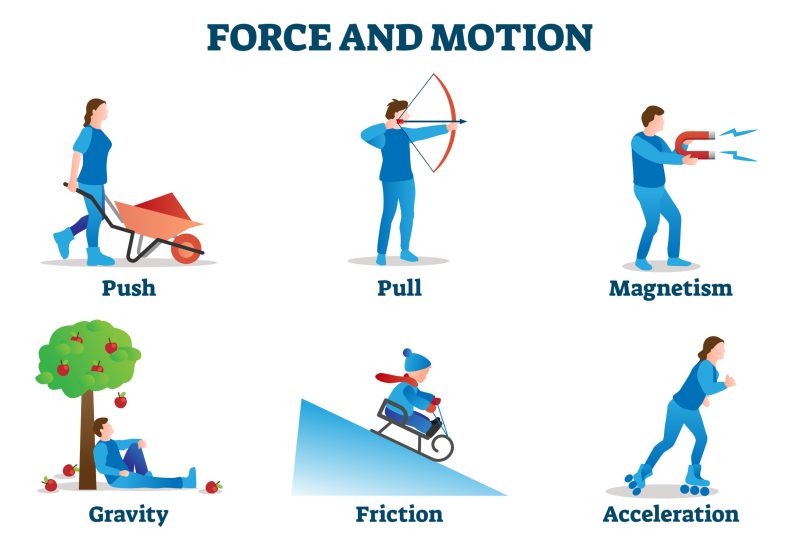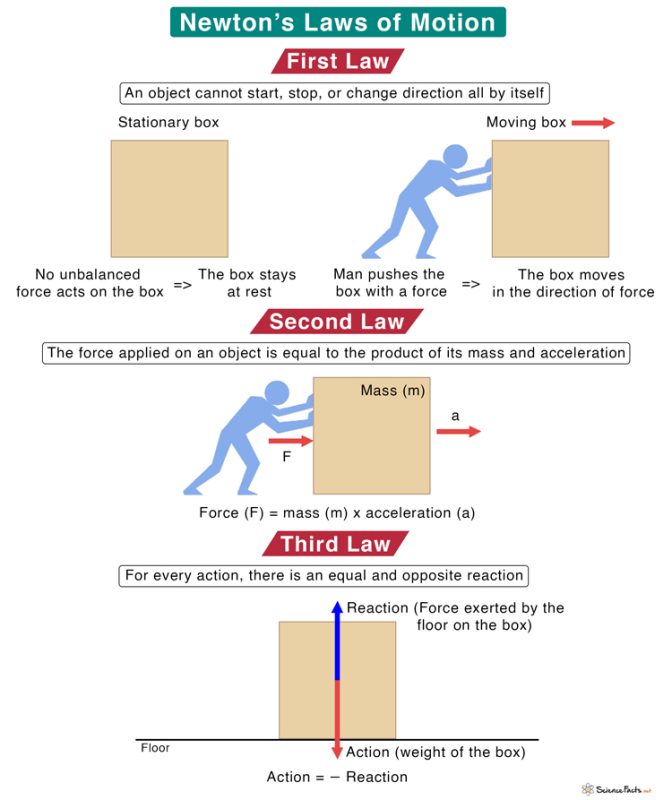Force
Force in mechanics refers to a physical quantity that can cause an object to accelerate, change its shape, or interact with other objects. It is a fundamental concept in Newtonian physics and is described by Newton’s laws of motion. Force is a vector quantity, meaning it has both magnitude and direction.
Understanding forces is crucial in analyzing the motion and equilibrium of objects in mechanics, as they play a central role in determining how objects interact and behave under various conditions.
The SI unit of force is the newton (N). One newton is defined as the force required to accelerate a mass of one kilogram by one meter per second squared (1 N = 1 kg·m/s²). Other units of force include pounds (lb) and dyne.
Newton’s laws describe the behavior of objects under the influence of forces:
- Newton’s First Law (Law of Inertia): An object at rest will remain at rest, and an object in motion will continue moving with a constant velocity unless acted upon by an external force.
- Newton’s Second Law (Law of Acceleration): The acceleration of an object is directly proportional to the net force applied to it and inversely proportional to its mass. It can be expressed as F = ma, where F is the force, m is the mass, and a is the acceleration.
- Newton’s Third Law (Law of Action and Reaction): For every action, there is an equal and opposite reaction. When an object exerts a force on another object, the second object exerts an equal and opposite force on the first object.
Forces can be categorized into different types based on their origin and nature. Some common types of forces include:
- Applied Force: A force applied to an object by a person or another object.
- Gravity: The force of attraction between two objects due to their masses. It causes objects to fall toward the Earth and is responsible for weight.
- Friction: The force that opposes the motion of objects in contact with each other. It can be useful (e.g., for walking) or unwanted (e.g., in mechanical systems).
- Normal Force: The force exerted by a surface to support the weight of an object resting on it. It acts perpendicular to the surface.
- Tension: The force transmitted through a string, rope, or cable when it is pulled at both ends.
- Spring Force: The force exerted by a stretched or compressed spring. It follows Hooke’s law, which states that the force is proportional to the displacement from the equilibrium position.
- Air Resistance: The force exerted by air on an object moving through it, opposing the object’s motion.
Forces are represented as vectors, meaning they have magnitude, direction, and point of application. Vector addition is used to find the net force acting on an object when multiple forces are present.




